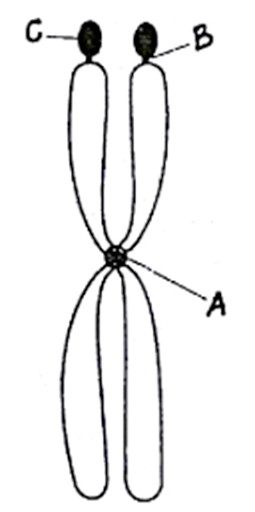CELL-THE UNIT OF LIFE
2020 MARCH
1. Choose the correct answer. The organelle known as power house of the
cell is:
a. Ribosome
b. Vacuole
c. Mitochondrion
d. Chloroplast
Answer: c)
Mitochondrion.
2. Peculiarities of certain cell organelles are given below:
a. Involved in protein synthesis.
b. Made up of many flat, disc shaped sacs or cisternae.
c. Bear ribosomes on their surface.
d. Rich in hydrolytic enzymes.
e. Membrane is absent.
Copy the table
given below and write the above peculiarities in appropriate column.
|
Lysosome |
Golgi
apparatus |
Ribosome |
|
|
|
|
Answer:
|
Lysosome |
Golgi
apparatus |
Ribosome |
|
Rich in hydrolytic enzymes. |
Made up of many flat, disc
shaped sacs or cisternae. |
· Involved in protein synthesis. · Membrane is absent. |
3. Cell theory was formulated by two
scientists.
a. Name the scientists.
b. Write the two main points in cell theory.
Answer:
(a) Schleiden and Schwann.
(b) All living organisms are composed of cells and product
of cells.
All cells
arise from pre-existing cells.
2019 JULY IMPROVEMENT
1. An improved model of the structure of plasma membrane was proposed by
Singer and Nicholson.
a. What is this model called?
b. Which component forms bilayer?
c.
Identify two types
of proteins present in cell membrane.
Answer:
(a) Fluid mosaic model.
(b) Lipids/Phosphoglycerides
(c)
Integral proteins, Peripheral or extrinsic proteins.
2019 MARCH
1. Choose the correct answer.
A structure seen
in bacterial cell is ..................
a. Nucleus
b. Lysosome
c.
Plastid
d. Mesosome
Answer: d)
Mesosome
2018 JULY IMPROVEMENT
1. Fill in the blank.
Small disc-shaped
structures at the surface of the centromere are called ...........
Answer: Kinetochore.
2. The nucleoplasm contains small spherical shaped structures.
a) Name the structures.
b) Name the openings seen in nuclear envelope and state their function.
Answer:
(a) Nucleolus
(b) Nuclear pores.
Function:
Movement of RNA and Protein takes place in both directions between the nucleus
and the cytoplasm.
2018 MARCH
1. There are different types of leucoplasts in plant cells. Name the
leucoplast that store proteins.
Answer: Aleuroplast
(proteinoplast).
2. Ribosomes are organelles without a
membrane found in all cells. Name another organelle devoid of membrane, seen in
animal cells. Write its function.
Answer:
Centrioles or centrosomes.
Function:
Takes part in the formation of spindle apparatus during cell division.
2017 JULY (IMPROVEMENT)
1. Position of centromere determine the
shape of the chromosomes.
a)
Name the different types of chromosomes
based on the position of centromere.
b)
Draw any one chromosome among them. (3)
Answer:
a) Metacentric, Submetacentric, Acrocentric &
Telocentric.
b) Figure (any one):
2017 MARCH
1. a)
Identify a cell organelle which contains hydrolytic enzymes.
b) Rough Endoplasmic Reticulum (RER)
and Smooth Endoplasmic Reticulum (SER) are morphologically and functionally
different. Justify this statement. (3)
Answer:
a) Lysosome.
b) Rough endoplasmic reticulum (RER): Bear
ribosomes on their surface. RER is frequently observed in the cells actively
involved in protein synthesis and secretion. They extend to the outer membrane
of the nucleus.
Smooth endoplasmic reticulum (SER): Ribosomes are absent. SER is the major site for synthesis
of lipid. In animal cells lipid-like steroidal hormones are synthesized in SER.
2016 MARCH
1. Observe the given diagram. Analyze this
diagram and explain the structure of plasma membrane. (3)
Answer:
It
consists of lipid bilayer. They are arranged within the membrane with the polar
head towards the outer sides and the hydrophobic tails towards the inner part.
The peripheral proteins lie on the surface of membrane while the integral
proteins are buried in the membrane.
2015 SEPTEMBER (IMPROVEMENT)
1. Several ribosomes may attach to a single mRNA and form a chain called
………….. (1)
Answer:
Polysomes or Polyribosomes.
2. Name the type of chromosome based on the position of centromere in the figure and label the parts A, B & C. (2)
Answer:
Metacentric chromosome.
A= Centromere.
B= Secondary constriction.
C= Satellite.
2015 MARCH
1. a) Due to the presence of a secondary constriction, a knob-like small
fragment appears in some chromosomes called
i) Kinetochore ii) Histone iii) Satellite iv)
Chiasmata
b) Classify chromosomes based on the position of centromere. (2)
Answer:
a) iii) Satellite.
b) Metacentric, Submetacentric, Acrocentric & Telocentric.



